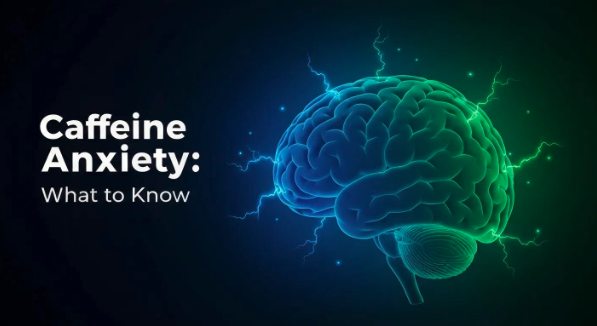Key Strategies for Preventing Emotional Burnout
Discover effective strategies for preventing emotional burnout and regain your vitality in daily life.

Recognizing Emotional Burnout
Signs of Emotional Exhaustion
Emotional exhaustion is a state of feeling emotionally drained and worn out, often resulting from prolonged stress or challenging events in one’s life. Recognizing the signs early can help individuals implement effective strategies for preventing emotional burnout before it escalates. The following table summarizes common signs of emotional exhaustion:
Sign of Emotional ExhaustionDescriptionFatigueA persistent feeling of tiredness that does not improve with rest.IrritabilityIncreased frustration or irritation over minor issues.Lack of MotivationDifficulties in finding the drive or enthusiasm for tasks that were once enjoyable.Difficulty ConcentratingTrouble focusing on tasks or remembering details.Emotional NumbnessA feeling of detachment from emotions or reduced ability to experience joy.Physical SymptomsHeadaches, stomach issues, or other bodily aches without clear physical causes.Changes in Sleep PatternsDifficulty sleeping or sleeping too much.
Emotional exhaustion can also manifest in altered performance symptoms, such as declining work performance or diminished engagement with personal relationships. For example, an individual may struggle to meet deadlines or become more withdrawn from social interactions.
According to Healthline, making small changes in daily habits such as eliminating stressors, exercising, and practicing mindfulness can help manage symptoms. Identifying what triggers emotional fatigue is crucial in addressing these signs effectively.
It is important to seek support from trusted friends or professionals if these symptoms persist. They can offer valuable insights and techniques such as emotional regulation techniques to help manage and mitigate emotional stress, ultimately aiding in preventing burnout.

Understanding Burnout
Definition and Characteristics
Burnout is a state of emotional, physical, and mental exhaustion caused by excessive and prolonged stress. It occurs when individuals feel overwhelmed, emotionally drained, and unable to meet constant demands. Recognizing the signs and symptoms of burnout is essential to prevent a major breakdown. Ignoring these signs may lead to long-term changes in the body and increased vulnerability to illnesses.
Burnout can be distinguished from stress. While stress involves having too many demands placed on a person, burnout is characterized by feelings of emptiness, mental exhaustion, and a lack of motivation. Common feelings associated with burnout include cynicism, hopelessness, and a loss of interest in previously enjoyed activities. Individuals experiencing burnout often describe their emotional state as feeling "dried up," in contrast to the overwhelming sense of being "drowned" by stress [1].
Burnout can progress through several stages, typically categorized into five phases:
StageDescriptionHoneymoon PhaseInitial excitement and energy from challenges.Stress OnsetAwareness of stress and its effects begins to emerge.Chronic StressPersistent stress becomes overwhelming, usually manifesting physical symptoms.BurnoutEmotional exhaustion sets in; feel drained, cynical, and disengaged.Habitual BurnoutContinuous feelings of sadness and fatigue; potential onset of depression.
Understanding the different stages of burnout is crucial for implementing strategies for preventing emotional burnout. Individuals in the final stage may experience persistent sadness, along with mental and physical fatigue, which could lead to further emotional challenges [1].
It is important to note that burnout is not solely a result of work-related stress; lifestyle factors, individual personality traits, and personal circumstances also contribute significantly to the development of burnout. Recognizing these contributing factors is essential for formulating effective prevention and coping strategies. By understanding burnout's definition and characteristics, individuals can begin to take proactive steps towards recovery and emotional resilience.
Factors Contributing to Burnout
Understanding the factors that contribute to emotional burnout is essential for developing effective strategies for preventing emotional burnout. These factors can be broadly categorized into work-related causes and lifestyle factors.
Work-Related Causes
Work-related stress is one of the primary contributors to burnout. Various elements in the workplace can lead to feelings of being overwhelmed and emotionally drained. Common work-related causes include:
Work-Related CausesDescriptionOverworkTaking on too many responsibilities or prolonged hours without adequate breaks.Lack of recognitionFeeling undervalued or unappreciated by colleagues or management.Poor work-life balanceDifficulty separating personal life from work responsibilities, leading to constant stress.Job insecurityConcerns about job loss or instability can contribute to chronic anxiety.Unclear job expectationsLack of clarity about job responsibilities can lead to confusion and stress.
Burnout can escalate from chronic stress to a state where individuals feel emotionally exhausted and devoid of motivation; this is characterized by feelings of cynicism and hopelessness. Recognizing these workplace triggers is crucial for individuals seeking to manage stress levels effectively.
Lifestyle Factors
In addition to work-related causes, lifestyle factors significantly affect emotional health. These include personal lifestyle choices and individual personality traits. Important lifestyle factors contributing to burnout include:
Lifestyle FactorsDescriptionPoor dietUnhealthy eating habits can negatively impact mood and energy levels.Lack of exerciseInactivity can lead to increased fatigue and emotional instability.Insufficient sleepChronic sleep deprivation can exacerbate stress and emotional exhaustion.Negative social supportSurrounding oneself with unsupportive individuals can lead to feelings of isolation.Personal outlookA pessimistic or negative perspective on life can contribute to feelings of hopelessness and burnout.
Understanding both work-related and lifestyle factors allows individuals to formulate comprehensive strategies against emotional exhaustion. For example, addressing impact of diet on emotional well-being and incorporating exercise as a tool for mood enhancement can significantly contribute to emotional stability and resilience.
Overall, burnout is a complex issue influenced by multiple factors. Identifying these can aid individuals in adopting proactive measures to prevent emotional burnout effectively.
Strategies for Preventing Burnout
In the pursuit of emotional well-being, individuals can adopt various strategies to prevent emotional burnout and maintain a balanced mood. These strategies encompass both lifestyle changes and establishing connections and support systems.
Lifestyle Changes
Making small adjustments in daily habits can significantly aid in managing symptoms and warding off emotional exhaustion. Here are several effective lifestyle changes:
Lifestyle ChangeDescriptionEliminate StressorsIdentify and remove sources of stress from your environment.Eat HealthyIncorporate a balanced diet, which can positively impact emotional well-being [2].Get Enough SleepAim for 7-9 hours of quality sleep each night to rejuvenate the mind and body.Exercise RegularlyEngage in physical activity, as it is known to enhance mood.Practice MindfulnessUtilize mindfulness techniques to stay grounded and reduce anxiety.Take BreaksAllow yourself short breaks throughout the day to recharge mentally.
Implementing these lifestyle changes can create a solid foundation for preventing emotional burnout, equipping individuals with tools to manage stress effectively. Additionally, seeking guidance from professionals may provide further support for those struggling with emotional challenges.
Connection and Support
Building a supportive network is essential in reducing the risk of emotional burnout. Establishing connections with trusted individuals can provide a sense of belonging and help manage stressors. Here are effective ways to foster connection and support:
By emphasizing connection and support, individuals can prevent emotional burnout more effectively. Strengthening relationships and building a network is crucial for confronting life's challenges and maintaining emotional stability.
Differentiating Burnout from Depression
Symptoms and Key Differences
Understanding the distinctions between burnout and depression is essential for identifying the appropriate strategies for preventing emotional burnout. While both conditions share certain symptoms, they arise from different circumstances and manifest distinct characteristics.
SymptomsBurnoutDepressionEmotional ExhaustionFeelings of emptiness and mental exhaustionPersistent sadness and hopelessnessMotivationDevoid of motivation to engage in activitiesLoss of interest and pleasure in activitiesConcentrationDifficulty focusing, especially on tasksDifficulty concentrating, but with broader emotional issuesCauseResult of prolonged workplace stressCan arise from a combination of genetic, psychological, and environmental factorsHope for ChangeOften sees no hope for positive changeMay also feel hopeless, but can alternate with moments of motivation
Burnout is primarily a reaction to prolonged stress, often arising from work-related demands or lifestyle pressures. It is characterized by a feeling of being mentally drained, devoid of motivation, and emotionally detached from one's responsibilities. Individuals facing burnout may struggle with concentrating on tasks and feel like they are running on empty. Over time, burnout can act as a risk factor for developing depression, with its gradual onset often creeping up on individuals, leading to increasingly severe symptoms [1].
In contrast, depression encompasses a wider range of emotional and psychological issues. While someone with burnout might primarily feel exhausted and empty, depression includes pervasive feelings of sadness, hopelessness, and a withdrawal from previously enjoyed activities. Those experiencing depression may struggle significantly with daily functioning, beyond simply feeling unmotivated or exhausted.
The progression of burnout typically follows a series of stages: Honeymoon Phase, Stress Onset, Chronic Stress, Burnout, and Habitual Burnout. In the final state of habitual burnout, individuals may start to experience symptoms synonymous with depression, such as persistent sadness and daunting fatigue.
Recognizing these differences and understanding the underlying causes can help individuals in seeking appropriate treatment and adopting effective strategies for preventing emotional burnout. If burnout is identified early, lifestyle changes and support systems can mitigate its impact and reduce the risk of progressing into clinical depression. For further insight on emotional regulation, visit our article on emotional regulation techniques.
Overcoming Burnout
The "Three R" Approach
Dealing with burnout involves a structured method known as the "Three R" approach: Recognize, Reverse, and build Resilience. This framework is essential for preventing and overcoming emotional exhaustion.
Recognizing the warning signs of burnout is the first step towards recovery. Individuals should pay attention to symptoms such as chronic fatigue, irritability, lack of motivation, and feelings of detachment. Acknowledging these signs allows them to take action before burnout worsens. This proactive approach can significantly impact one’s emotional health and overall well-being.
Once signs of burnout are recognized, it is crucial to reverse the damage caused by stress. This can include seeking support from trusted friends, family members, or mental health professionals. Professional assistance can help identify the sources of burnout and develop a tailored plan to regain a sense of well-being
Building resilience is essential for long-term recovery and emotional stability. Focus on self-care practices that promote both physical and emotional health. Techniques such as mindfulness, emotional regulation, and engaging in enjoyable activities can enhance resilience. Building connections with supportive individuals and participating in stress-reducing activities can also strengthen one’s ability to cope with future stressors.
Three R ApproachDescriptionRecognizeIdentifying signs of burnout and acknowledging emotional exhaustion.ReverseTaking action to eliminate stressors and seeking support.ResilienceFocusing on self-care practices to strengthen coping mechanisms.
Utilizing the "Three R" approach can help individuals regain control over their emotions and reduce the likelihood of future burnout. For those facing significant emotional challenges, seeking assistance and learning about emotional regulation techniques can be beneficial.
References
[2]:
[3]:
[4]:
[5]:
[6]:
[7]:
More Resources
A team ready to start your journey.
Get in touch — today.
We are a safe space – a haven for exceptional individuals to receive discreet, personalized, in-person treatment and care.
.avif)



.webp)






